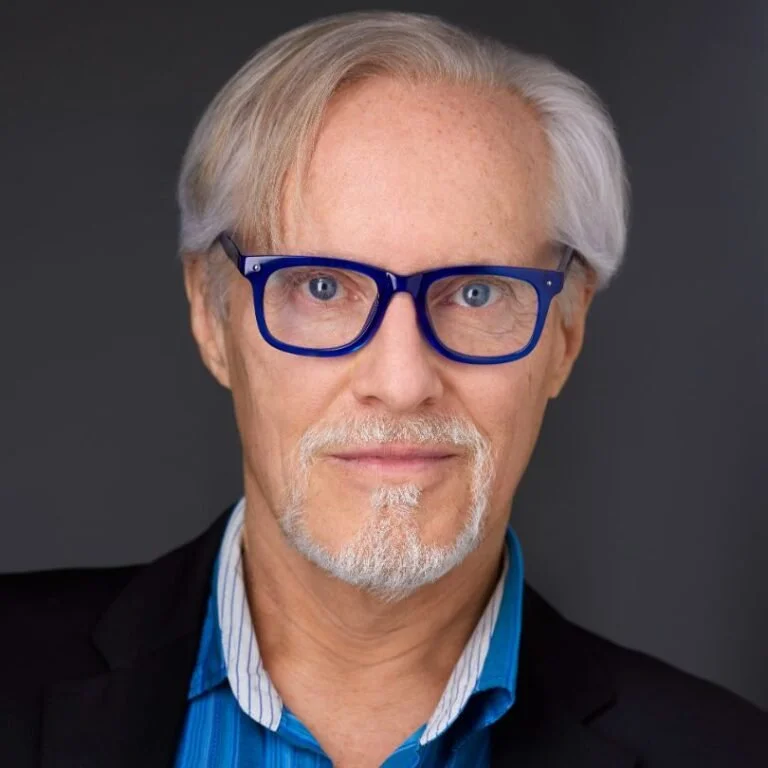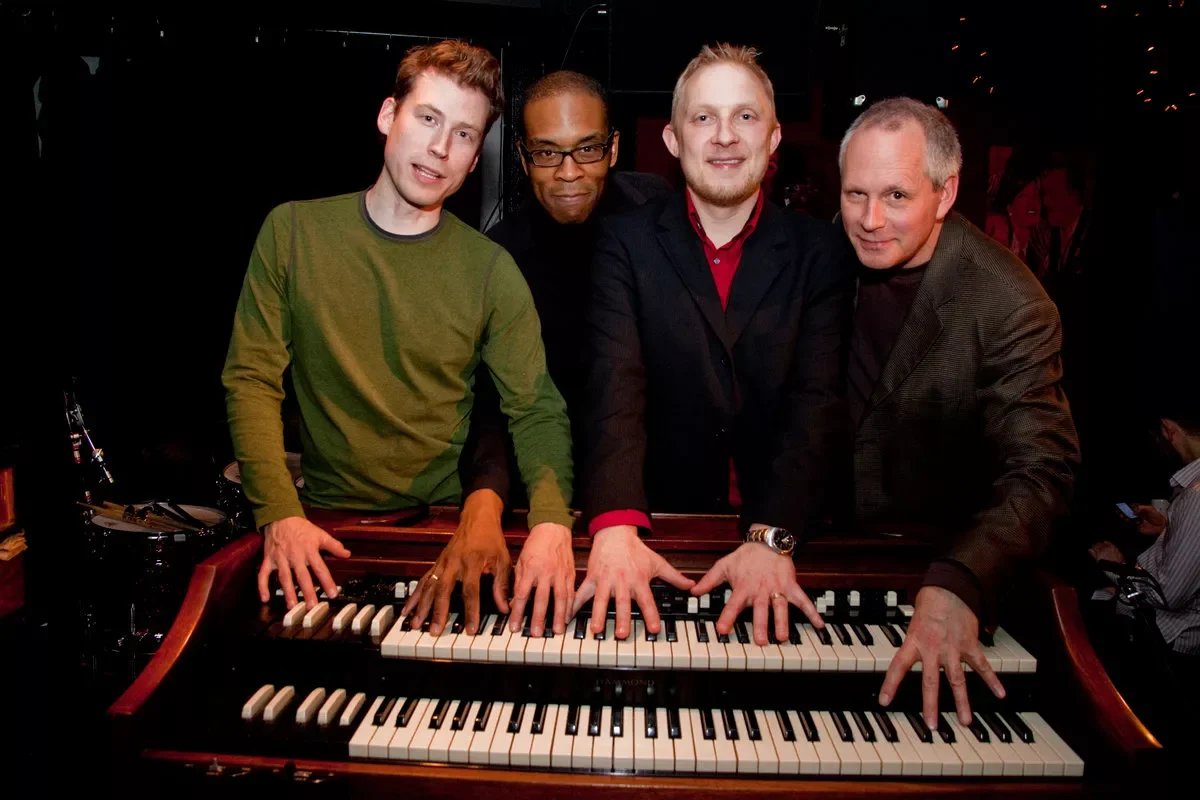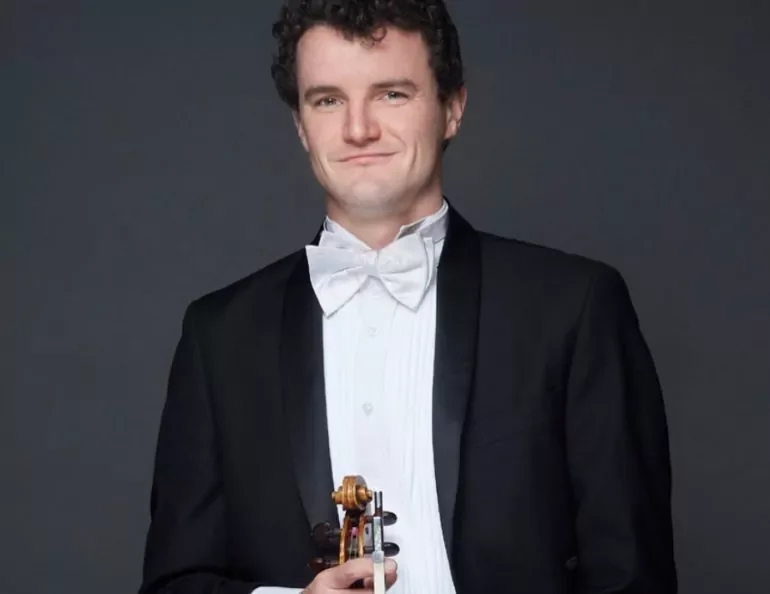Epic Flying Dutchman sets sail at Vancouver Opera, with director Brian Deedrick at the helm
A focus on the people—and a lot of laughter—help with the Wagnerian task of creating a striking new production
Gregory Dahl cuts a formidable swath as a Dutchman who diverges from the usual salty stereotype. Photo by Rene Pierre
Vancouver Opera presents The Flying Dutchman at the Queen Elizabeth Theatre from April 29 to May 7
THE MUSIC OF RICHARD Wagner’s The Flying Dutchman is stormy and haunting, a swirl of rousing choruses, dizzying duets, and dark orchestral rumination.
It’s a work so epic and rich that it demands more than casual attention—not something you’d listen to every day. Unless, of course, you’re Canadian stage director Brian Deedrick. For his third mounting of the momentous Wagner warhorse, he’s working with a new team of designers and singers to build a strikingly different production from the ground up. So preparing to take the helm—in only the third staging of The Flying Dutchman in Vancouver Opera’s history—he figures he’s worked his way through the two-hour-plus soundtrack at least once per day for the past six months.
“The opera becomes for me, in listening to it over and over again, about obsession. It's about alienation. It's about the outsiders,” says the good-humoured artist over the phone, and then adds with one of many laughs over the course of our conversation: “Listen to that! I did that in 10 words! Why could I not write my damn program notes? I've just said something clever!”
In the famous story, based on legend, the Dutchman is doomed to sail the seas forever unless he can find a faithful woman—and Senta, the daughter of a Norwegian sea captain, may be his only hope. Deedrick sees the Dutchman (played here by VO favourite Gregory Dahl) as the ultimate outsider in all of opera—but the real discovery for this production is the outsider status of his love interest Senta (soprano Marjorie Owens, for whom it’s a signature role). Deedrick has shifted the entire story to suggest it’s being told uniquely from her point of view, the show’s animated projections (by Wladimiro A. Woyno Rodriguez) a hallucinatory expression of her psychological journey.
“Our rehearsals have been so much about finding out who are these people—these outsiders?” he says. “And how does society respond to them—or you know, to be honest, respond against them? This has been a real discovery….And then all of a sudden last week, Marjorie Owens—who has done this more times than you and I have had hot dinners—she just did something in rehearsal that made me go, ‘Oh, I've never thought of that connection before!’ And so just when you're feeling like an expert on things, it's right back to the drawing board.”
The sheer logistics of staging a work of this scale, with its grand choruses, is no easy task, but Deedrick has been drawn to gigantic operas over his career. In Vancouver alone, the small-town Lacombe, Alberta-raised artist has staged big-time pieces like Aïda and Turandot over the years.
After joking that it may be masochism, the freelance theatre and opera director (a former artistic director of the Edmonton Opera) admits he’s always enjoyed tackling the bigger works that take him back and forth across Canada and the U.S. and as far afield as Italy, Germany, and Israel. (The fact that he spends each summer switching gears to work as a tour guide in Berlin might be part of what allows him to regroup.)
“Opera gives a person the opportunity to play in a larger sandbox, which is sort of what I was craving, and I love that grand scale—a man facing his own demons, and yet the demons of the universe,” he says. “In The Flying Dutchman, it's man against the universe, and forces larger than ourselves. And that's kind of thrilling to be exposed to that. Yes, you want to go back periodically and see a play about a kitchen sink and how grandma's having a bad day because her dentures fell in the toilet. But on the other end, let's deal with Man and the Cosmos.”
The key to approaching larger works, Deedrick says, is to start with the people—no matter how mythical or supernatural the story.
Stage director Brian Deedrick
“I always go back to that: who is this man who has been sailing the seas for anywhere, depending on which of the versions you read, between 200 or 500 years?” he explains. “Ultimately, you've got to find the man, the woman, the person in those stories. And I kind of love that—I love taking that kernel, that germ of an idea, and allowing it to grow and grow and grow.
“It's so easy to fall into some of these operas and go, ‘Oh, we're just telling a great big story with lots of people out there in a world and lalalalala’, but I try to look for the psychological aspects of it,” he adds. “That's what I'm finding really thrilling this time around.”
Aside from Owens’s integral input, he’s enjoyed working with baritone Dahl in the titular role—seen in early pictures from the production with shaved head, copious tattoos, and a formidable, haunting presence. (This is not the stereotypical salty ghost-seaman satirized in the famous SpongeBob episode.)
“We've done so many shows together, but we've never done anything that's on this epic a scale,” Deedrick says of Dahl. “I would say the closest thing with him and I would be when we did Otello together. And his Iago was nothing short of amazing. But this is The Flying Dutchman: it is one of those big-boy roles where you've got to get on your big-boy pants. The intensity of the sing! That aria from Act 1! It is breathtaking. And there was never any doubt in my mind that Greg would be fantastic at it.”
It’s a dark journey—but Deedrick clearly is having a blast with the cast and their music, especially staging showstopping numbers like the men’s thundering Sailors’ chorus or the women’s famous Spinning chorus. (Deedrick went into the latter fearing “the 52 most difficult bars to stage in the opera”, and ended up flying with inspiration from the famous I Love Lucy chocolate-factory conveyor-belt scene… But we digress.)
“Listen, here is a bouquet to your city and your city's opera company: This bunch of people are fantastic,” Deedrick says. “It's just blowing my mind how much fun I think they are having with putting this together, and they're so professional, they're so prepared. And yes, I think that there will be laughter—or there's kind of a smile at the absurdity of some of the men's chorus work that they do. The whole wedding scene of Act 3: it's like Carrie, it’s like the dance party in the gym—and don't worry, I'm not one of those directors! This is not set at a high school! Some of the stories that come out of German productions of this just make your head spin!—but still, they are having a good drunken evening of dancing, getting ready for the wedding that is about to happen, and things go horribly, horribly wrong.”
As you can tell, as dark and stormy as this new The Flying Dutchman inevitably will be when it opens here, there has been a lot of laughter behind the scenes. And perhaps that’s the best way to get through the, well, Wagnerian task at hand—not to mention daily submersion in the tumultuous score.
“These are funny, funny human beings,” Deedrick says. “You can be right up to the point of saying, ‘Okay, and here is the downbeat,’ and somebody will make a joke—like a belching joke. And then you get immersed in it again. I mean, that's it: it’s laughing in the preparation stage, as the human beings in the room telling the story.”














